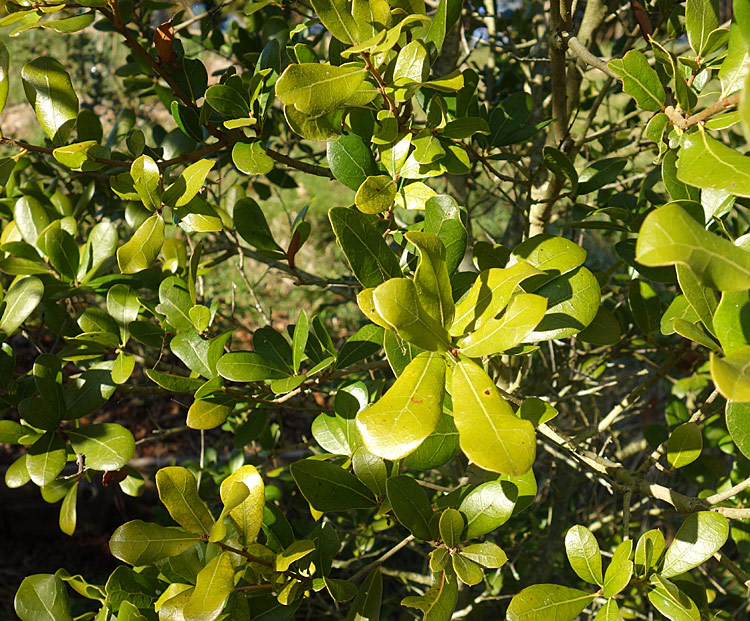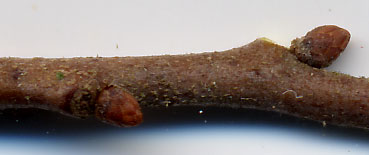| Quercus myrtifolia | |
| Author | Willd. 1805 Sp. Pl. 4: 424 |
| Synonyms | myrtifolia f. ampla Trel. 1924 phellos var. arenaria Chapm. 1860 |
| Local names | myrtle oak ; seaside scrub oak ; |
| Range | Florida, near sea level; South Carolina; Mississipi; |
| Growth habit | to 9 m tall; often shrubby; |
| Leaves | 2-5 x 1.2-3 cm; evergreen; oboval to elliptic; thick; apex rounded often mucronate; base cuneate to rounded; margin revolute, entire or sometimes with 1-3 pairs of minute, bristle-tipped teeth; shiny dark green, hairless above; yellow green beneath with axil rusty tufts; 6-8 vein pairs; petiole glabrescent, 2-5 mm long; |
| Flowers | spring; |
| Fruits | acorn globose, 1-1.2 cm in diameter; turning blackish; sessile; 1 to 2 together, sessile or on a short peduncle; cup with appressed grey scales, covering less than 1/3 of nut; maturing in 2 years; |
|
Bark, twigs and |
bark light grey, smooth at first, becoming furrowed near the base; twigs hairy becoming hairless; buds red brown, hairless; |
| Hardiness zone, habitat | hardy zone 7 (withstands -14 ° C); prefers dry, sandy soils; |
| Miscellaneous | -- A.Camus : n° 403; -- Sub-genus Quercus, section Lobatae, subsection Phellos; -- Hybridizes with Q.incana = Q.x oviedoensis Sarg., (but this taxon could be a form of Q.inopina ...) |
| Subspecies and varieties |
|
| Pictures |
More pictures HERE
|







